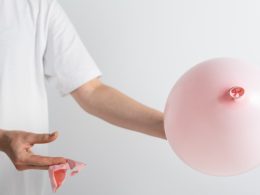Table of Contents
While they are a popular fashion trend and have been for years, high heels can cause a variety of physical problems. To begin with, they shift a woman’s weight onto the ball of her foot and thus throw her entire body off-balance. Her back, legs, and hips are then forced to compensate, and she can develop pain in all of these areas.
High heels eventually cause a myriad of problems with the feet. They can cause tendonitis and pinched nerves. High heels put pressure on the toes which leads to problems like ingrown toenails, bunions, and hammertoes.
They also cause the fat pad on the sole of the foot to atrophy, and that loss of cushioning can lead to a generalized pain called metatarsalgia. There are ways to avoid or lessen the damage caused by heels. Consider the following recommendations.

Stop wearing high heels
The simplest way to avoid the problems caused by high heels is to not wear them in the first place. If that isn’t possible, you should at least minimize the time spent wearing them. For example, you could wear a more comfortable pair of shoes during your commute and slip on the high heels after reaching your office. Similarly, after coming from work, you can take off your high heels and put on something more comfortable.
Wear shoes with good support
Not all high heels are created equal, and some are less bad for your feet than others. Stilettos, for example, are notoriously bad for your feet, because they provide very little stability and a very little area to support your body weight. Shoes with thicker heels, by contrast, offer more stability and support. You should also look for brands that provide cushioning and arch support.
Massage and stretch your legs
Even the best pair of high heels will leave you with tight calf muscles and Achilles’ tendons. After taking your shoes off for the day, do stretches to loosen up your muscles. Massage your toes if they hurt. High heels often force toes into an unnaturally cramped position, and simply spreading them apart after taking your shoes off can make them feel a lot better.
See a podiatrist
If your feet still hurt despite using the above self-care measures, it’s time to call a foot doctor. They can diagnose the cause of the pain and recommend a suitable treatment. They will often start by recommending the aforementioned self-care measures along with anti-inflammatory medications. If those don’t work, other possible treatments include orthotics, corticosteroid injections, and physical therapy. Surgery is a last resort.
If you’ve been wearing high heels for extended periods, then you need to see a podiatrist as soon as possible to determine the damage caused to your tendons. While much of the damage is reversible with therapy, more extreme measures may become necessary the longer you put off proper care.















